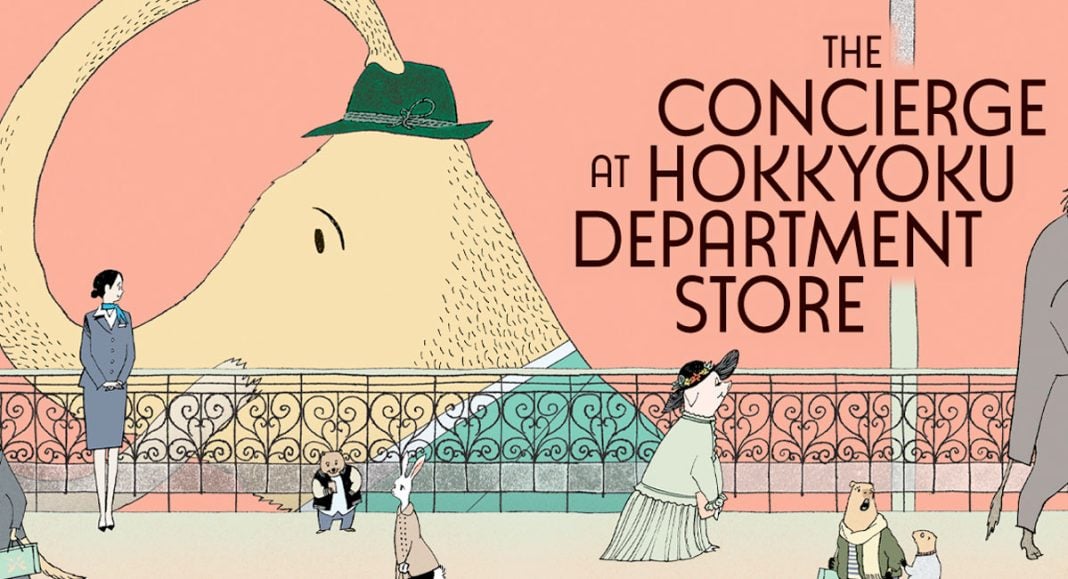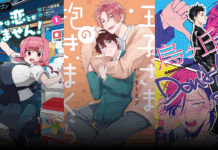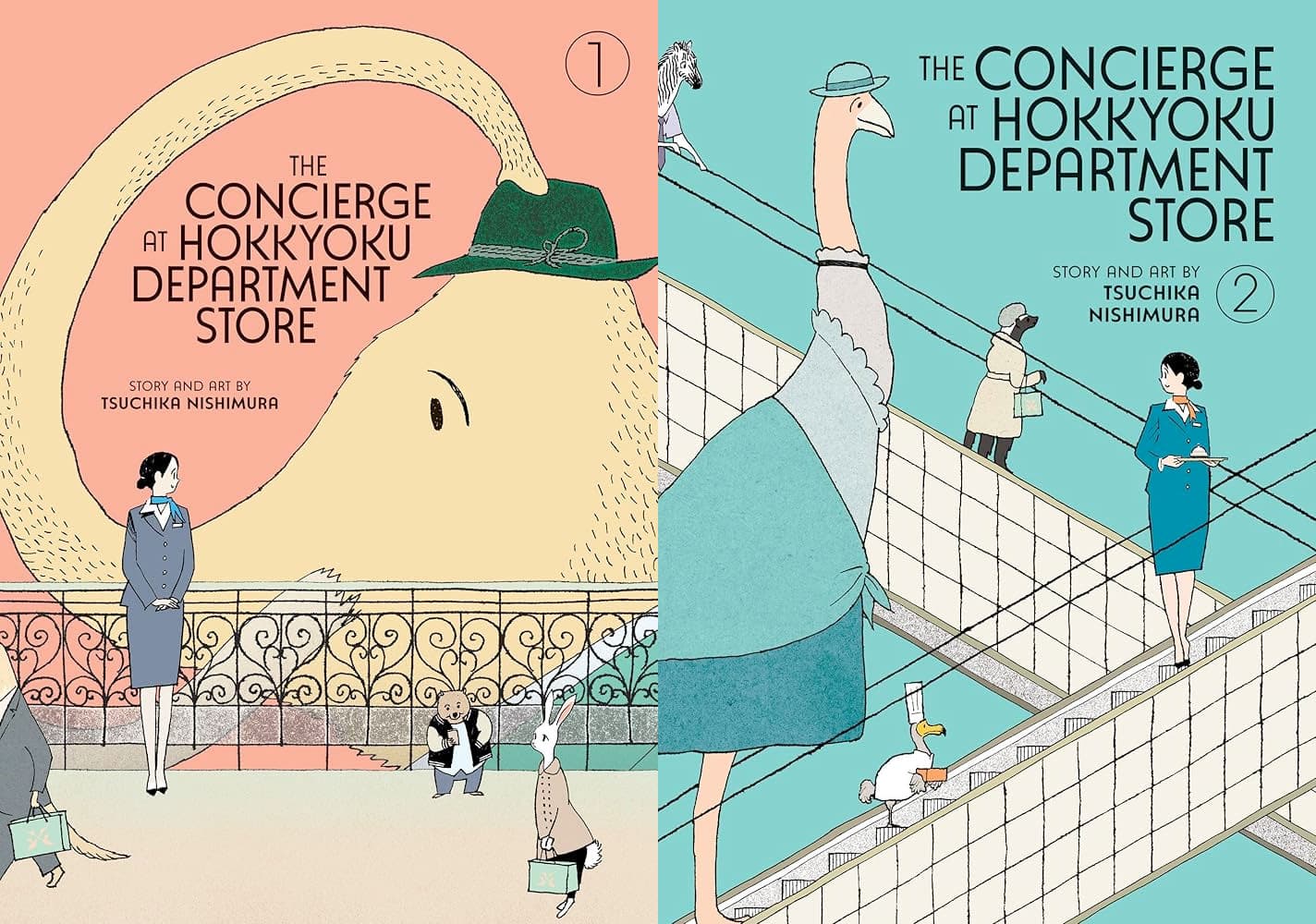
Cartoonist: Tsuchika Nishimura
Translator: Jan Cash
Letterer: Mercedes McGarry
Editor: Linda Lombardi
Publisher: Seven Seas Entertainment / $13.99
Fall/Winter 2024
I’ve decided this manga is a Mystery. Not the detective kind, the older type with knights and ghosts. The haunted castle in pathless Mirkwood is a chance for chivalry to be rewarded with life after death. But– change death to extinction, as the patrons of the department store are all animals, an array of endangered species (aren’t we all). There’s no Mari Lwyd, but there is a wooly mammoth, and you can buy a Tarkus at the toy shop. Tsuchika Nishimura has built a timeless, foreboding monument to wealth. A fantasy emporium- and its staff? The Concierge at Hokkyoku Department Store has a valiant heart.
Our young errant is the titular concierge, one of many, and the newest. Her job is to accommodate: to perform the art of fulfilling impossible requests. To spar with desire. Scarier, to facilitate consumerism. Not quite an agent of conspicuous consumption, this concierge’s intentions are genuine even if the caliber of shopping at Hokkyoku explicitly comes with expected servitude. The great auk catches your eye with a sparkle, definitely trying to tell you something. What does the act of service say about human nature?
Nishimura explicitly makes points when he wants to. The little guidebook comes out every chapter, but instead of learning about this episode’s guest animal, mostly their entries are the reason they went extinct. The type of commerce you were that people killed you for. The shopping center is a cathedral built on the violence of property, an altar to ownership. Nishimura says this in the text. The problem is the ambiguity of the rest of the book, I guess. Celebrating how neo-colonial slavery brings out the best in us, that’s not it, right?
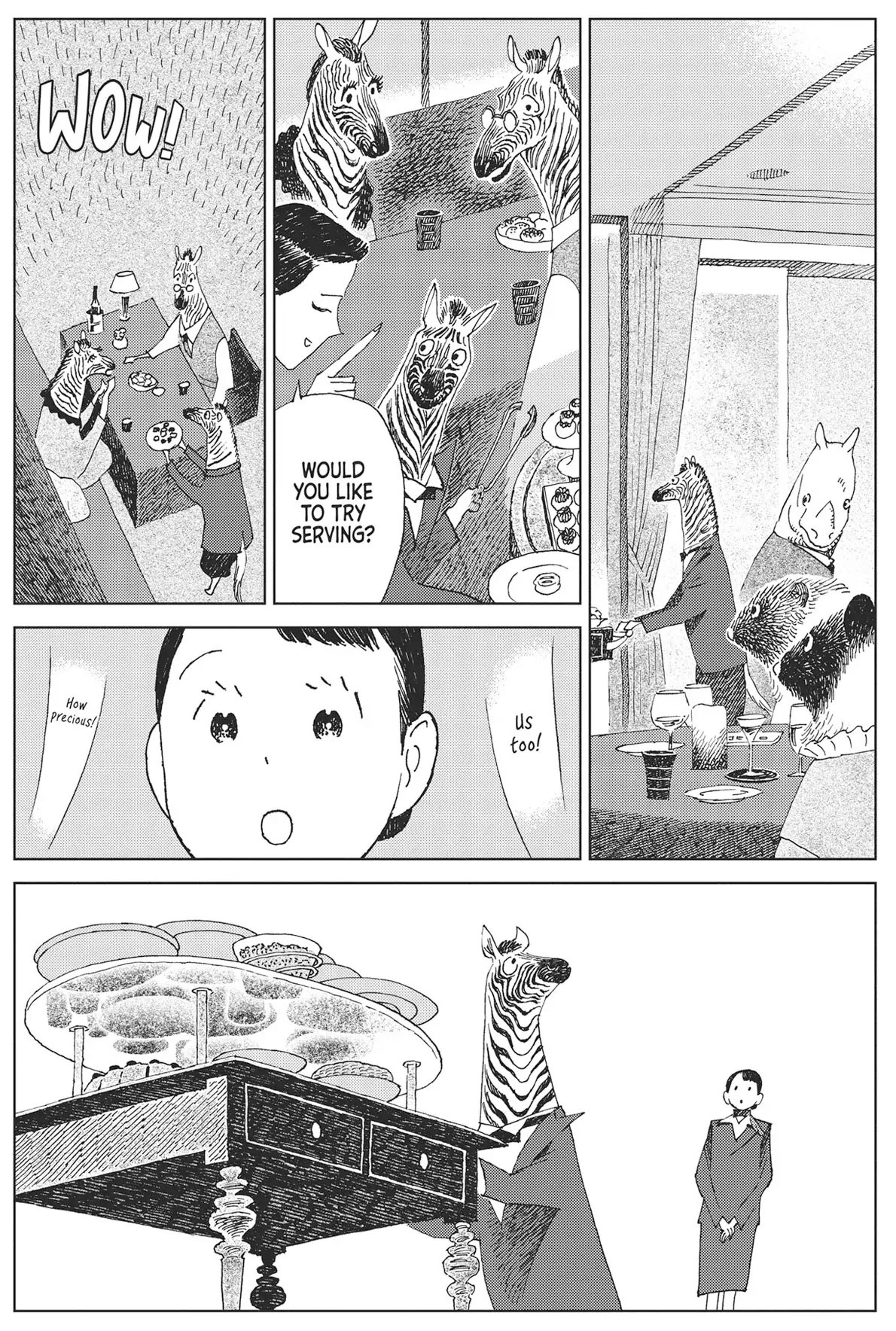
Nishimura’s art is a quiet celebration of opulence. Architecture designed to express wealth is visually impressive, and the illustrations drip with elegance. You can see money, and this place is it. Like I said, when it comes to the story, the details of how the challenge was met by the concierge is where the bliss lies, not the inevitable success. The art also offers opportunities to step out of the plot’s path and drink in the presence of the moment. The awe the setting inspires draws its power from the extravagance that drives the plot. Morally conflicting but emotionally potent.
The setting and its formality, the guests and their behavior, the sanctity and seriousness of service, it’s all of an earlier era. The spoils of robber-baron wealth extraction, treated as such, deifying the acquisition of leisure. Nishimura’s manga style is a throwback as well, realistic enough to portray opulence and anatomically correct animals (dressed in every look the catalog has to offer) like a modern day Little Nemo, but done with a spare, sure linework that that reminds me, not exactly of Geo McManus, but his international influence on the artists that followed. The vaguely BD vibe is really an old school comic strip aesthetic. High society with a dash of viper jive serves the setting. Nishimura’s style is gentler than the Gilded Age comics it has the most in common with. The faintest hint of mod.
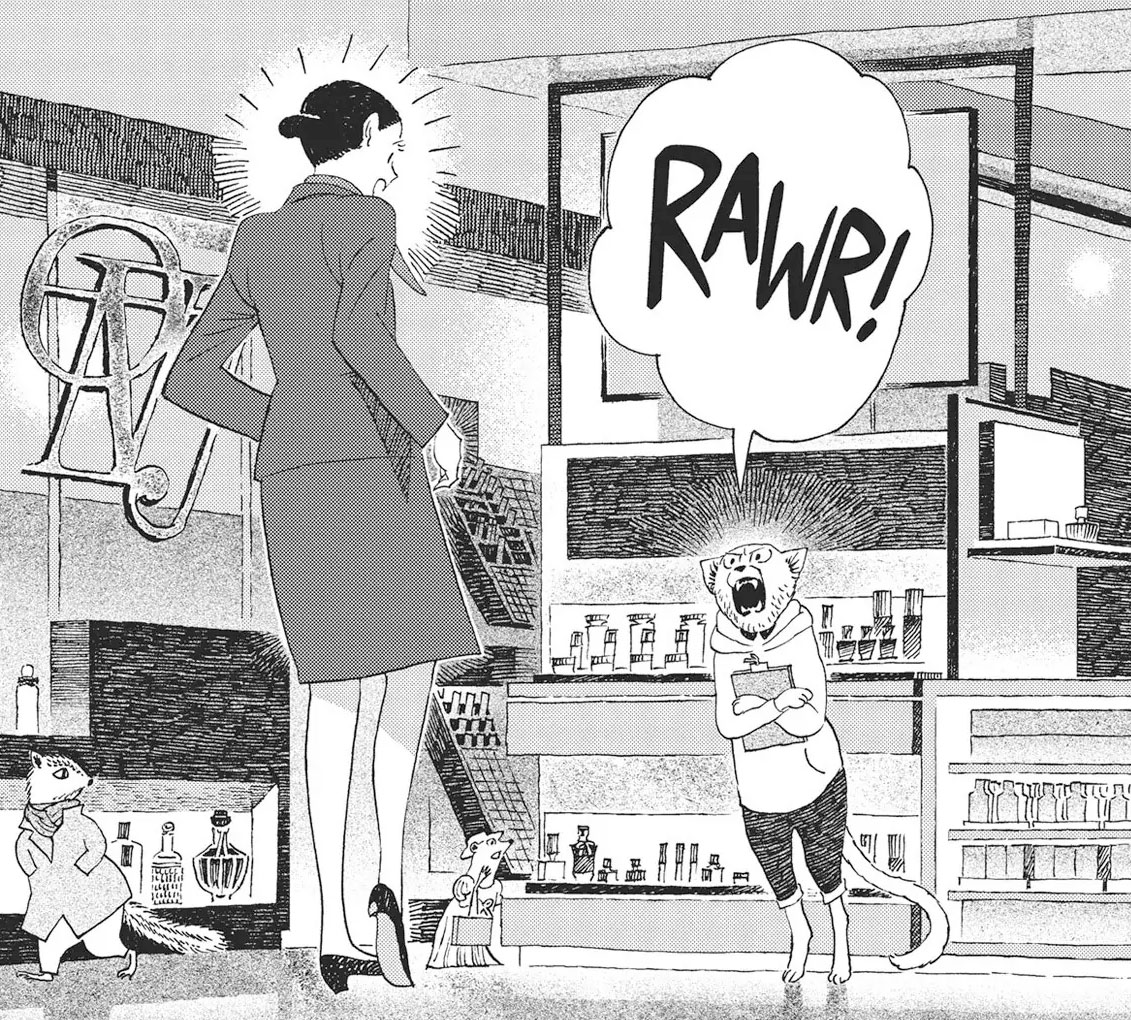
This is what you died for. You get to experience it.
So, despite the act being a dance through the charnel house, Hokkyoku Department Store discovers what is unique about individuals- despite all the consumerism- and honors that in a way that feels special and earnest. This manga is angry with people, but also celebrates them, mostly as they would celebrate themselves. Aware of the price of consumption but not offering any alternative. Celebrating the dreams and intentions of a society squeezing the life out of humanity as casually as juice at the complimentary breakfast bar. So what are you telling me here, Nishimura?
The hours per week compounded into years that I’ve lost to being at some place, someone else’s business, just so I could eat and sleep in a bare scrape of security, they don’t feel like they’re missing until I go looking for them. But the fleeting, anonymous moments where I put the right book in a reader’s hand, they flood back instantly. Which life is real, the fifteen minutes of feeling present in the moment without regret or the hour and forty five on the train going home? Pitting the time it takes to carve a statue of a smilodon versus the time one spends looking at it, also a quick path to cynicism, defeat. But am I enabling my own serfdom by ignoring what I’ve lost? What, as they say, the fuck?
Considering the time I’ve spent being exploited makes me furious. To ignore it is the only way to not lose your mind. This is me, holding both of these concepts in my thoughts at the same time. That I cannot be content with the way of the world when the world is so unjust, and it is not on me alone to carry the burden of how the system I was born into was structured to operate. So what are you telling me here, Nishimura?
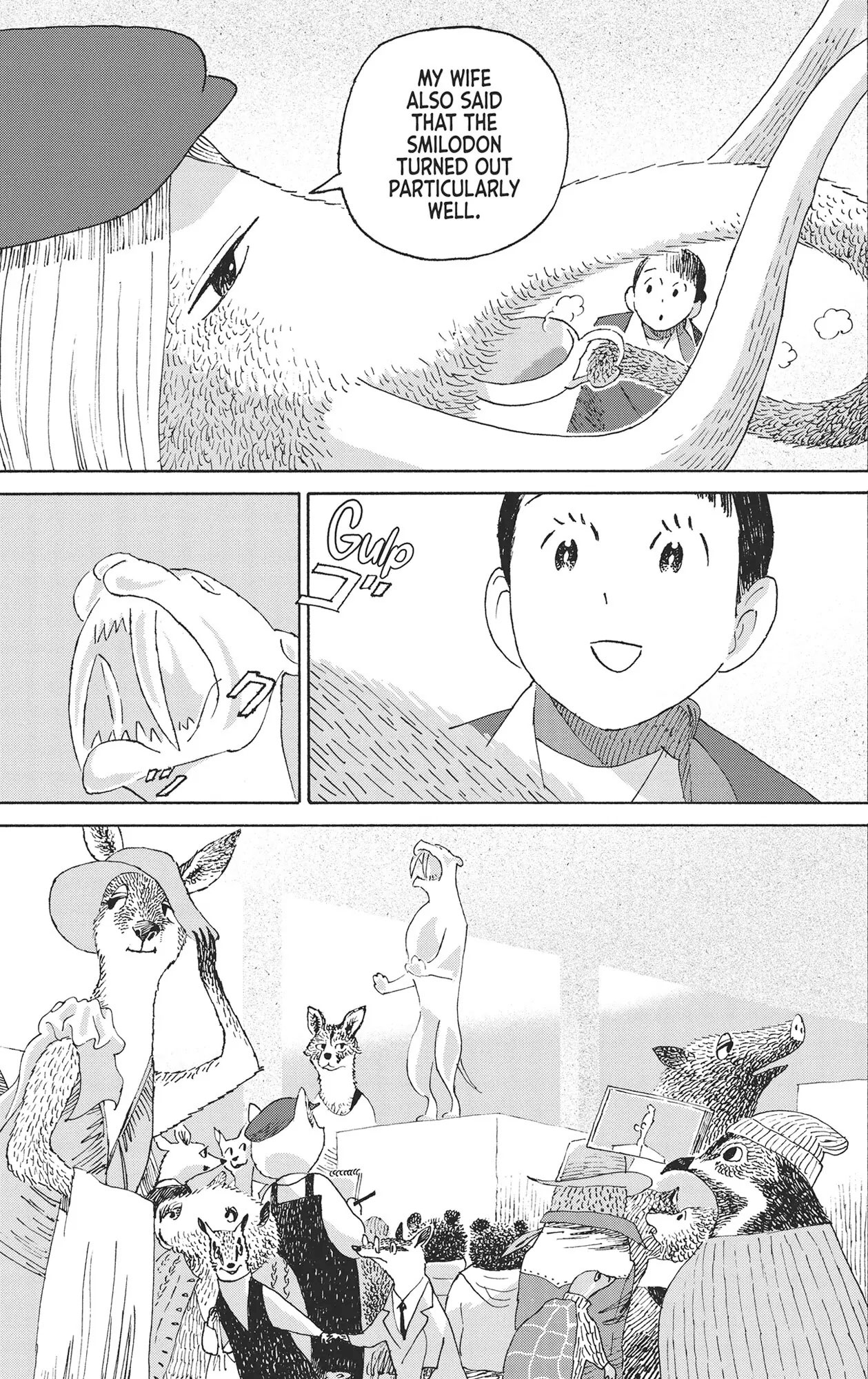
Then comes flooding in an apprehension for reframing concierge duties in a shopping center as a monastic pursuit. Chivalry is hard to reconcile with the broken shields and bloody swords that make up a knight’s day job. A bunch of killers on horseback. The department store an egregore of class-conscious consumption. The beauty is built on blood, blubber, pelts, hide. Is security worth it? Can we make it worth it? What do we tell ourselves?
There is value in non-transactional exchange. Something that chandeliers and cash registers have nothing to do with. The box store is built in an assumption of your emptiness, the shadow of the dream that built places like Hokkyoku. They have what you need. You should be the one deciding what you need. Taste isn’t passive, it describes your desire. You’re who decides what speaks to you. This is a manga about someone genuinely listening.
The two volumes that make up The Concierge at Hokkyoku Department Store are available from Seven Seas or wherever finer manga, comics, and books are sold.


